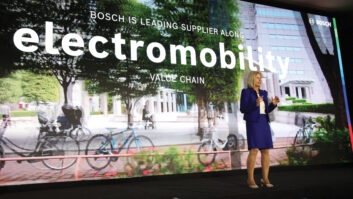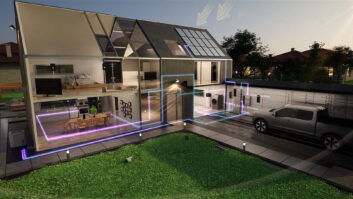Arlington, VA, April 23, 2015 – Our use of consumer electronics (CE) for telecommuting and common e-commerce activities such as e-reading is lowering the country’s energy use and reducing its greenhouse gas (GHG) emissions, according to new research released today by the Consumer Electronics Association(CEA)®.
CEA’s study The Energy and Greenhouse Gas Emissions Impacts of Telecommuting and e-Commerce says that in 2013, telecommuting or teleworking reduced U.S. energy use by the equivalent of as much as three power plants, or the annual electricity consumption of almost 750,000 households. The equivalent energy savings from e-commerce – the use of e-newspapers and e-books – is roughly that of as much as one power plant, or the yearly electricity consumption of more than 275,000 households.
“While innovation is constantly developing more energy efficient consumer electronics, the very use of these devices for activities such as teleworking and e-commerce is also leading to significant environmental benefits,” said Gary Shapiro, president and CEO, CEA. “The more people and businesses who use technology to telecommute and engage in e-commerce, the fewer cars and exhaust we have on the road, the less gasoline and electricity we need every year, and the greater the energy savings from lower production and delivery of paper materials.”
According to the CEA study, referencing the 2009 National Highway Transportation Survey, almost 11 million workers telecommuted at least once per month in 2013. That telecommuting reduced our nation’s annual vehicle miles travelled (VMT) by a weighted average of almost 1,400 miles per telecommuter – roughly the distance from Washington, D.C. to Denver, CO. Telecommuting has also reduced total U.S. gasoline consumption by a half a percent – saving one out of every 200 gallons of gas.
“When I first became involved with telecommuting nearly two decades ago, I realized that what we were dealing with was best described as ‘technology-enabled telecommuting,’” said Chuck Wilsker, president and CEO of The Telework Coalition. “Without the consumer electronics innovations that have evolved during this time, we wouldn’t have realized the current benefits we’re seeing for employers, employees, the economy and the environment. I applaud the technology industry for its progress to date, and am very interested to see what accomplishments are still in store for us.”
The use of e-books in 2013 displaced as many as 393 million print books, resulting in a GHG emissions-reduction equivalent to roughly two million metric tons of carbon dioxide. For e-newspapers in 2013, the emissions reductions were even greater. As many as six million daily print newspapers were displaced, producing an emissions-reduction equivalent of roughly three million metric tons of carbon dioxide.
“During Earth Month, when we all more closely consider how our daily activities impact the environment, we’re proud to call attention to the fact that some of our evolving business practices – enabled by consumer electronics – are indeed lessening our carbon emissions and reducing our energy use,” said Douglas Johnson, vice president of technology policy for CEA. “This study is yet more proof that policymakers must take a big picture view of technology’s ability to improve our energy efficiency, not only through the innovation and efficiencies of devices themselves, but also the systemic opportunities for savings.”
This study was conducted by Fraunhofer USA Center for Sustainable Energy Systems and commissioned by CEA. Fraunhofer used a life-cycle analysis approach to evaluate the energy and GHG impacts to compare telecommuting and e-commerce to conventional commuting, paper books, and paper newspapers. The 2015 study updates earlier research (TIAX 2007) on the energy and GHG impacts of telecommuting. The entire study, The Energy and Greenhouse Gas Emissions Impacts of Telecommuting and e-Commerce, can be found here.
While CE products now have a significantly higher market penetration in U.S. homes, the devices account for a lower percentage of electricity usage per household than they did three years ago, according to Energy Consumption of Consumer Electronics in U.S. Homes in 2013. The CEA study says CE devices accounted for just 12 percent of residential electricity consumption in the U.S. in 2013, a nine percent drop from their energy consumption share in 2010 (13.2 percent).
For a comprehensive look at the CE industry’s ongoing efforts toward improved sustainability and efficiency, please see The Consumer Electronics Association 2013 Sustainability Report. CEA also supports consumer education on energy efficiency and e-cycling via the website GreenerGadgets.org, where consumers can calculate their approximate home energy usage with the Consumer Electronics Energy Calculator and find tips to help reduce their energy costs.
About CEA:
The Consumer Electronics Association (CEA) is the technology trade association representing the $286 billion U.S. consumer electronics industry. More than 2,000 companies enjoy the benefits of CEA membership, including legislative and regulatory advocacy, market research, technical training and education, industry promotion, standards development and the fostering of business and strategic relationships. CEA also owns and produces the International CES – The Global Stage for Innovation. All profits from CES are reinvested into CEA’s industry services. Find CEA online at www.CE.org, www.DeclareInnovation.com and through social media:












